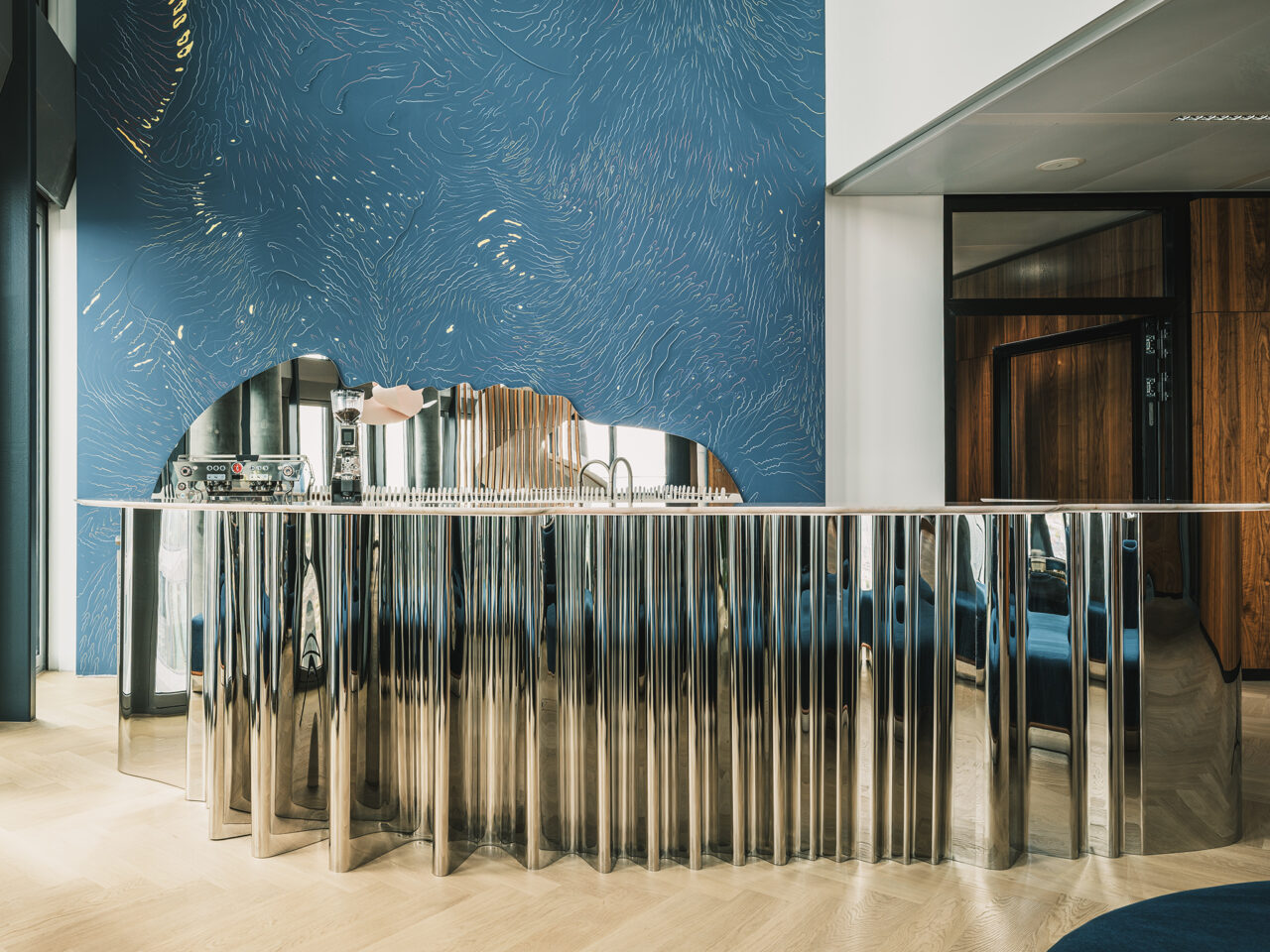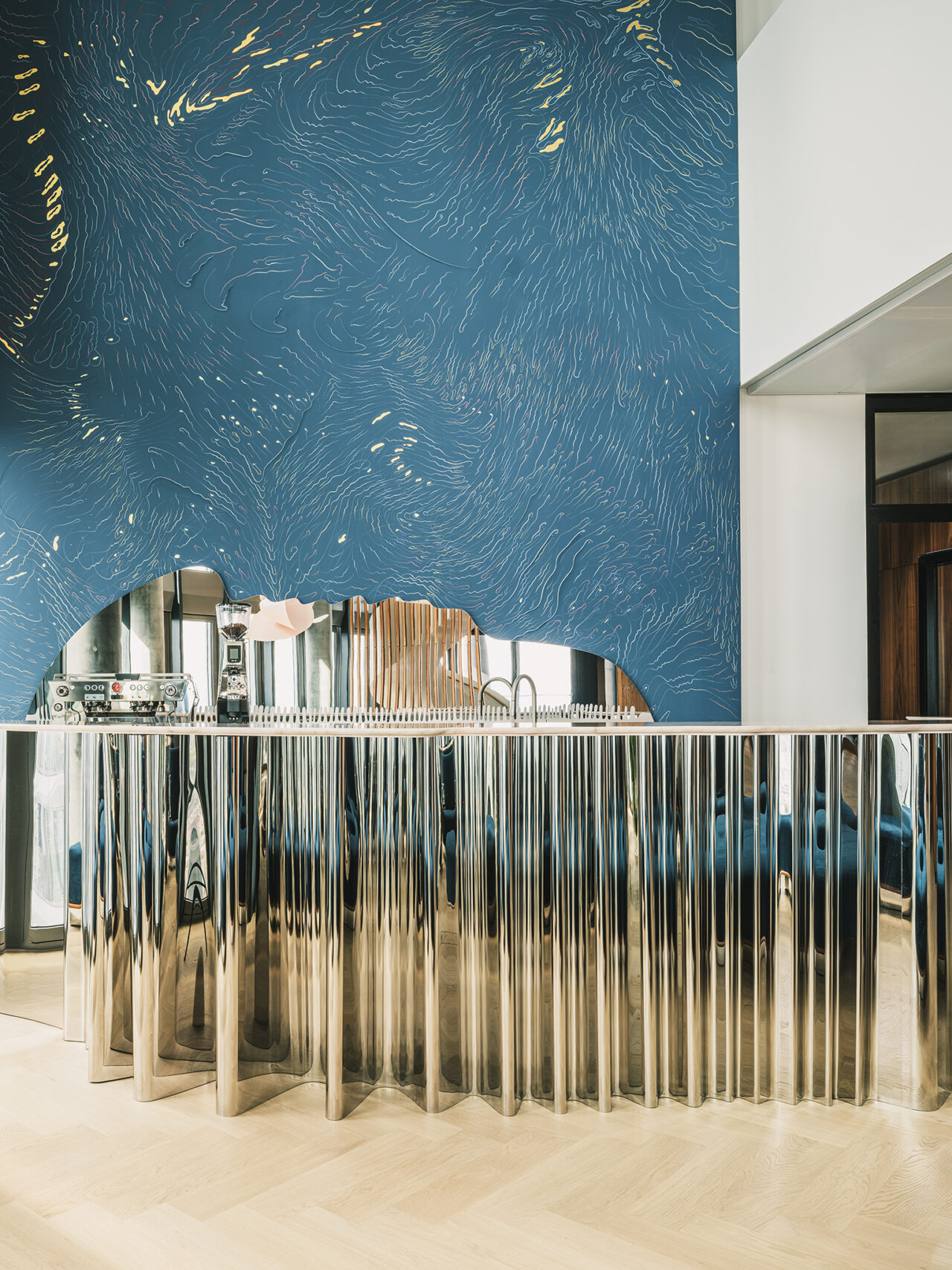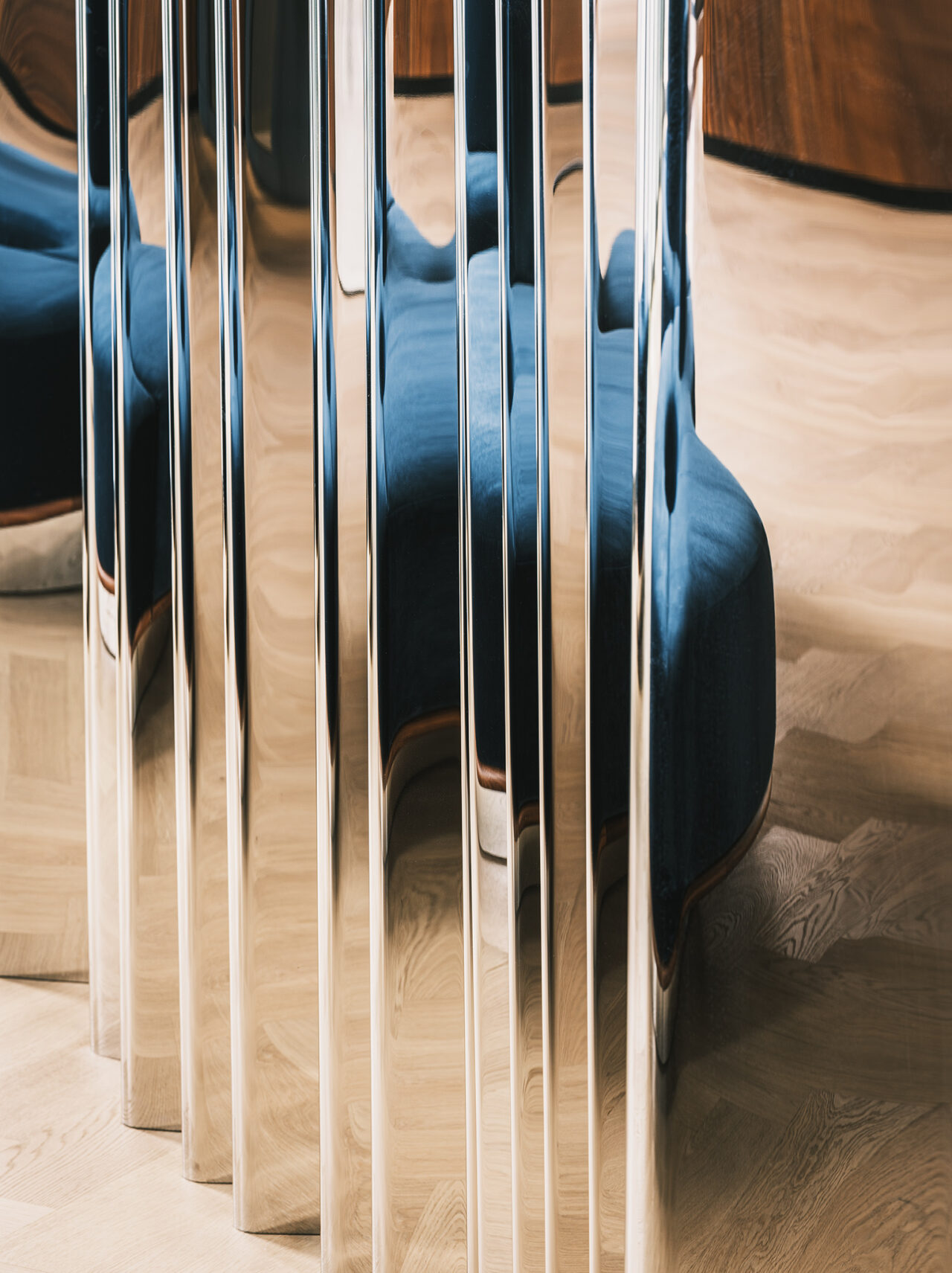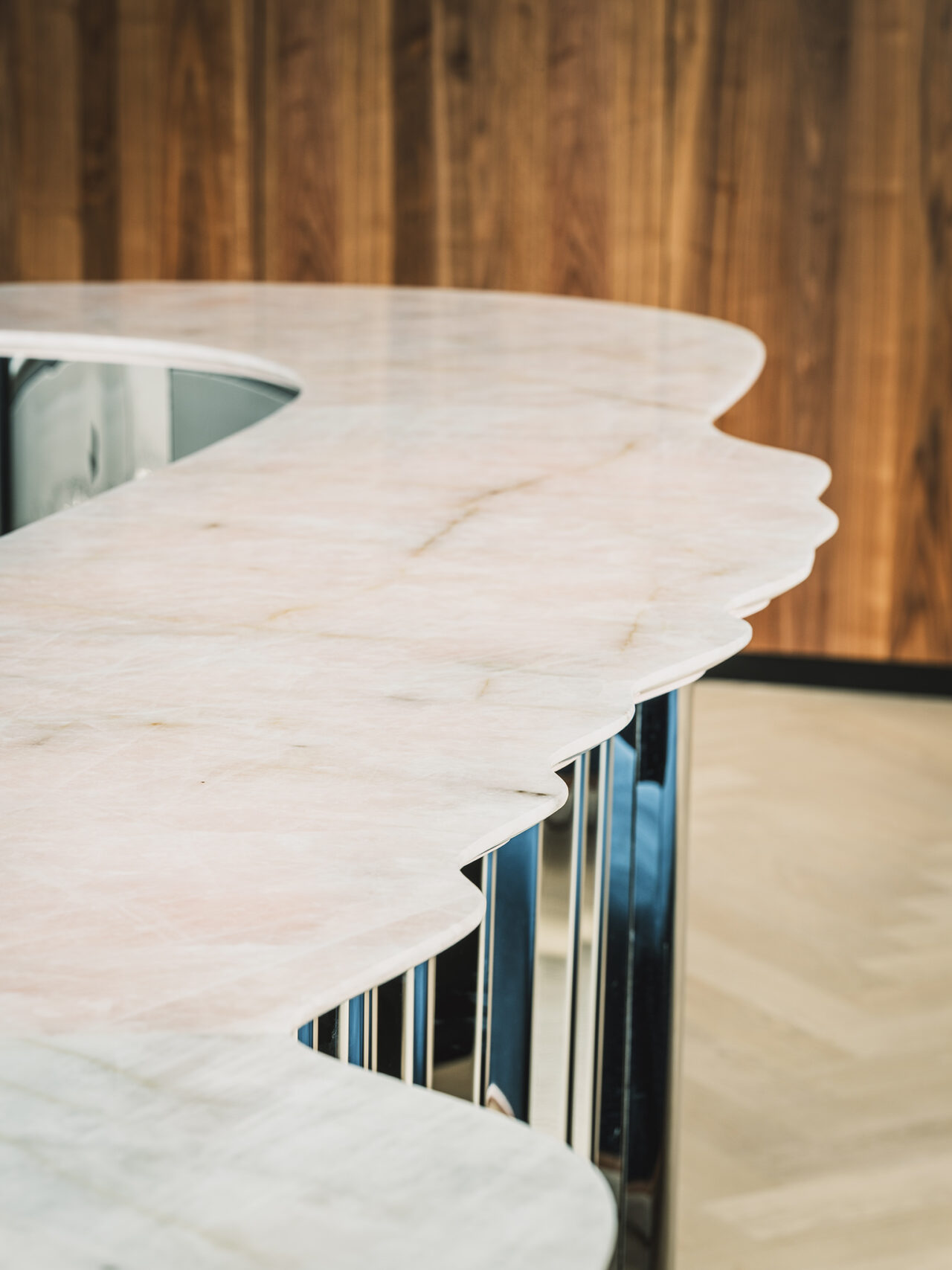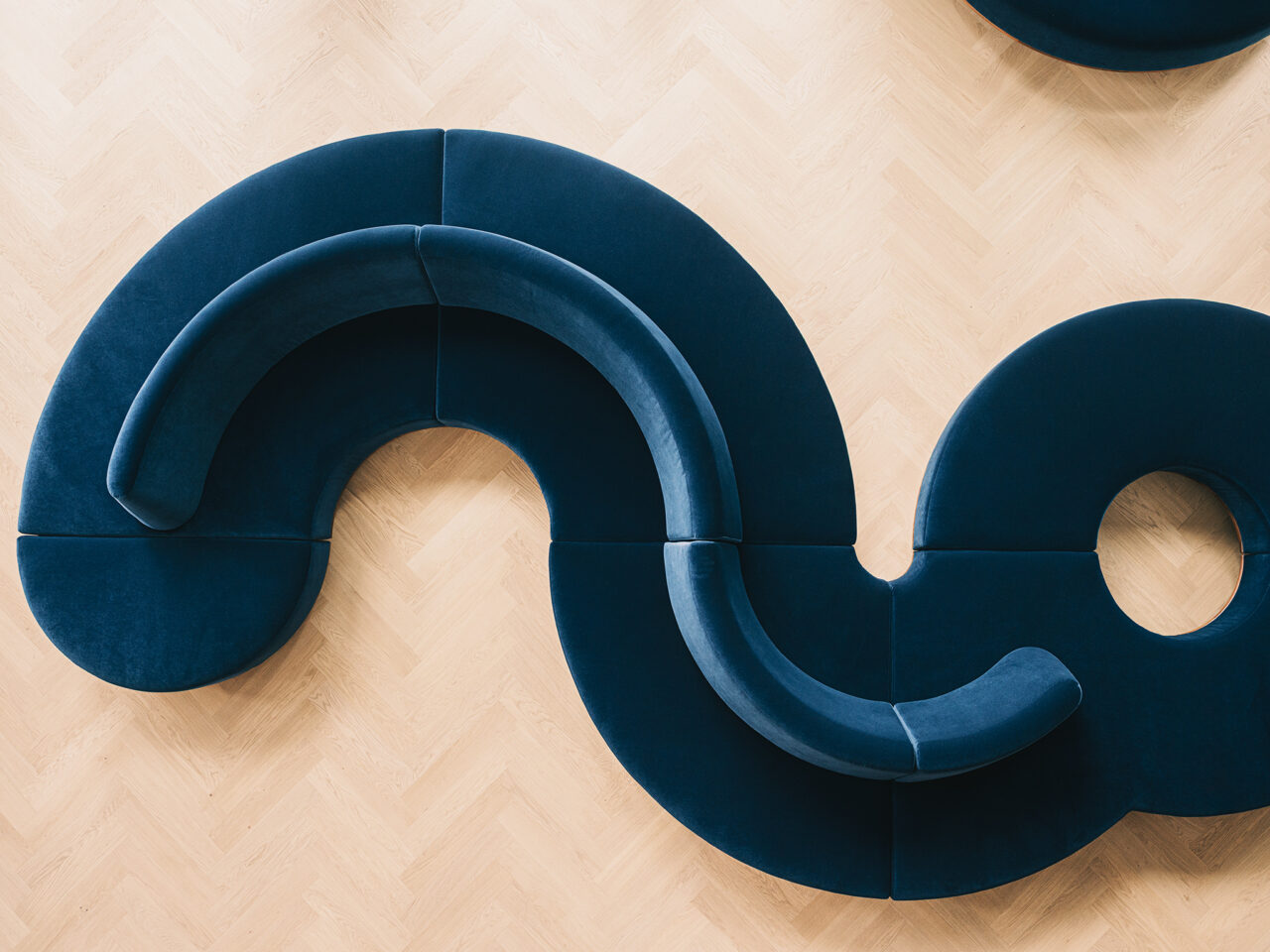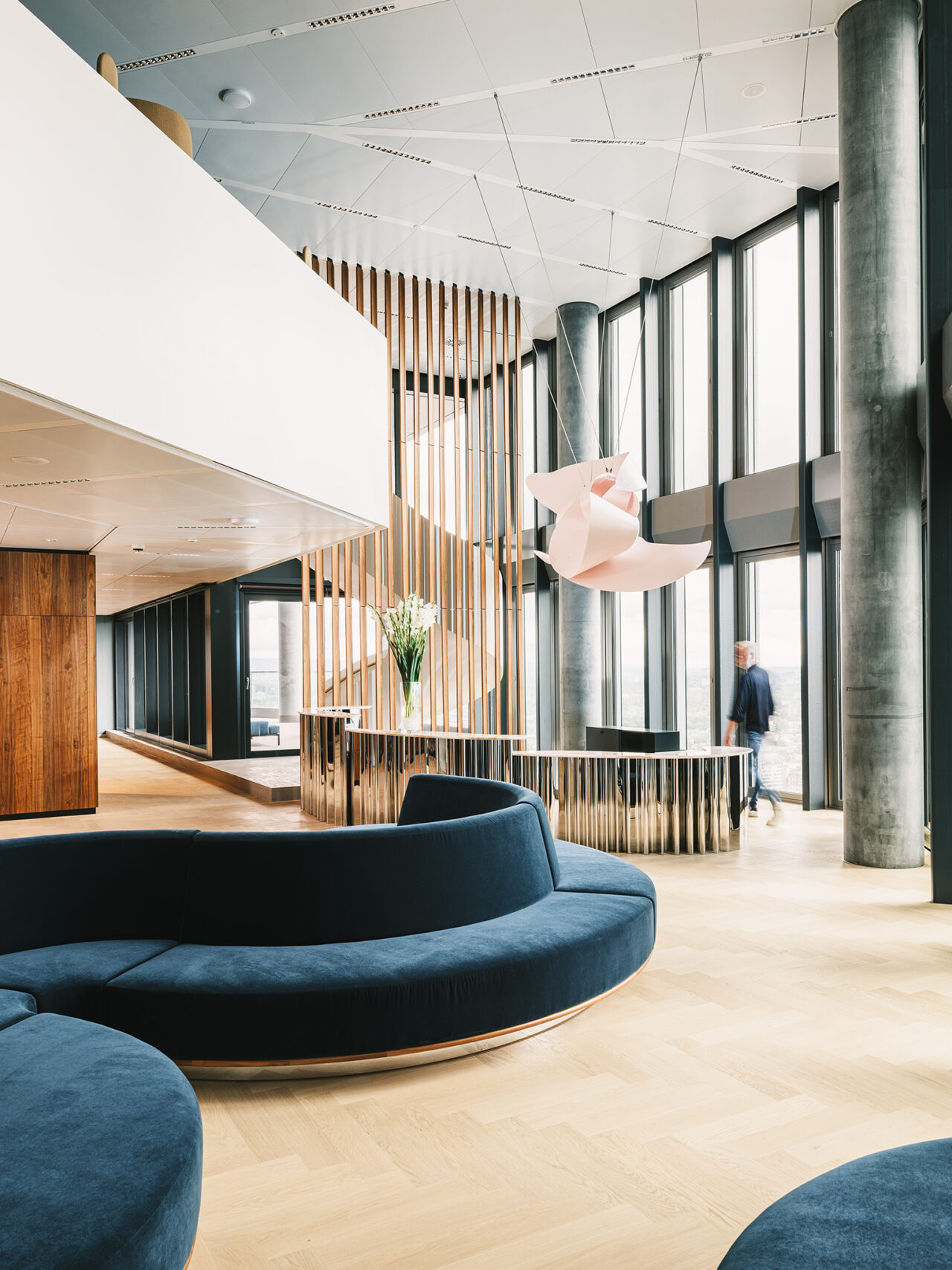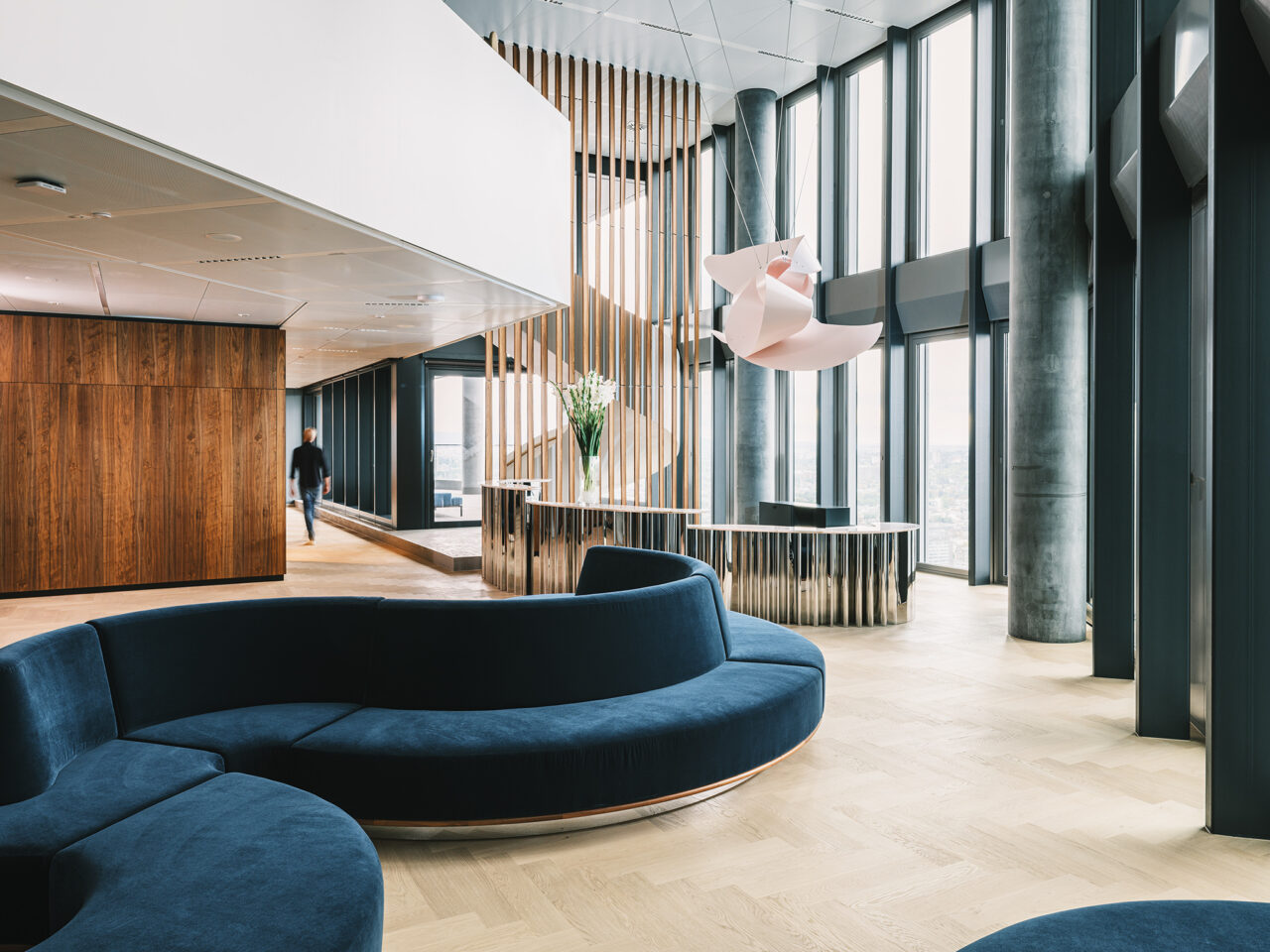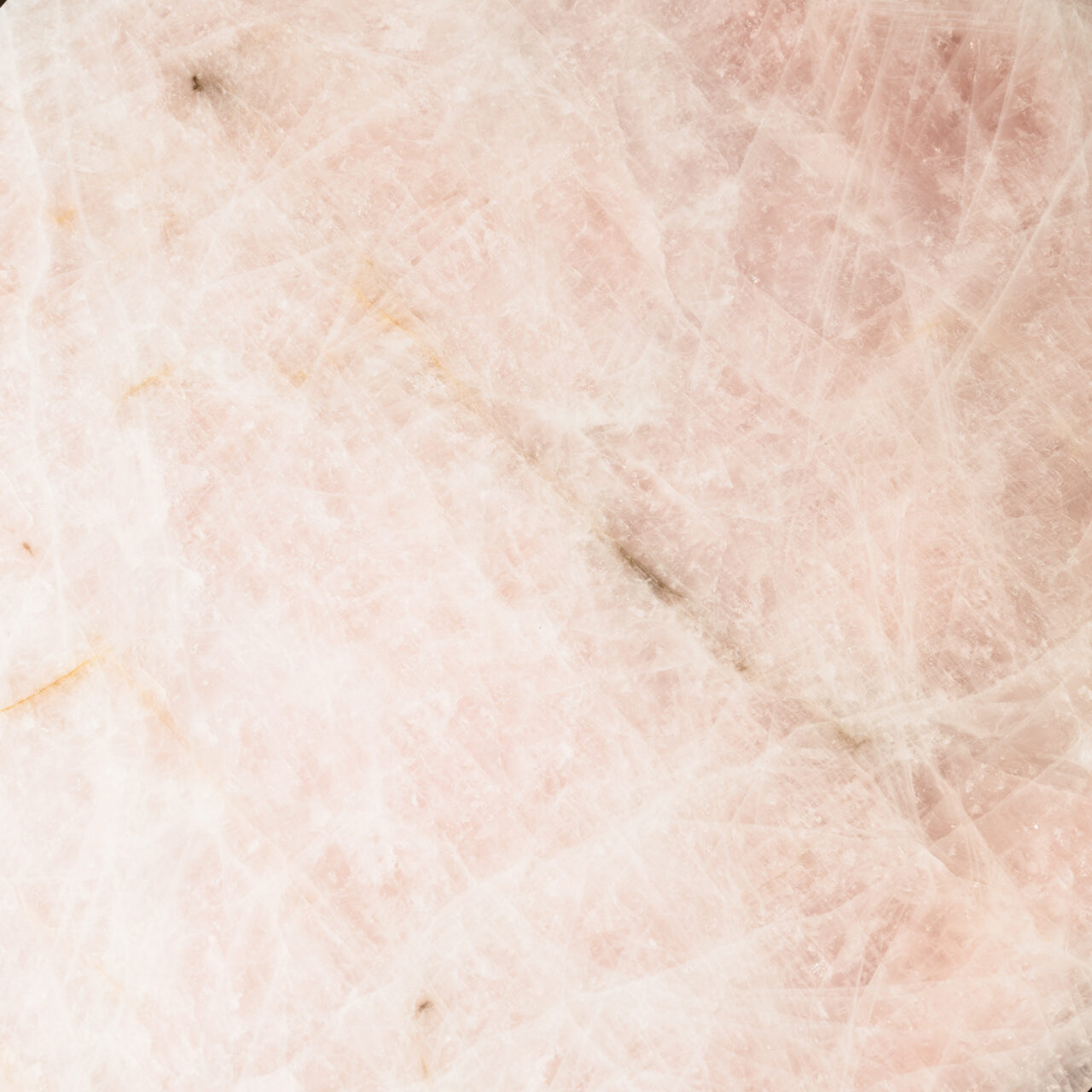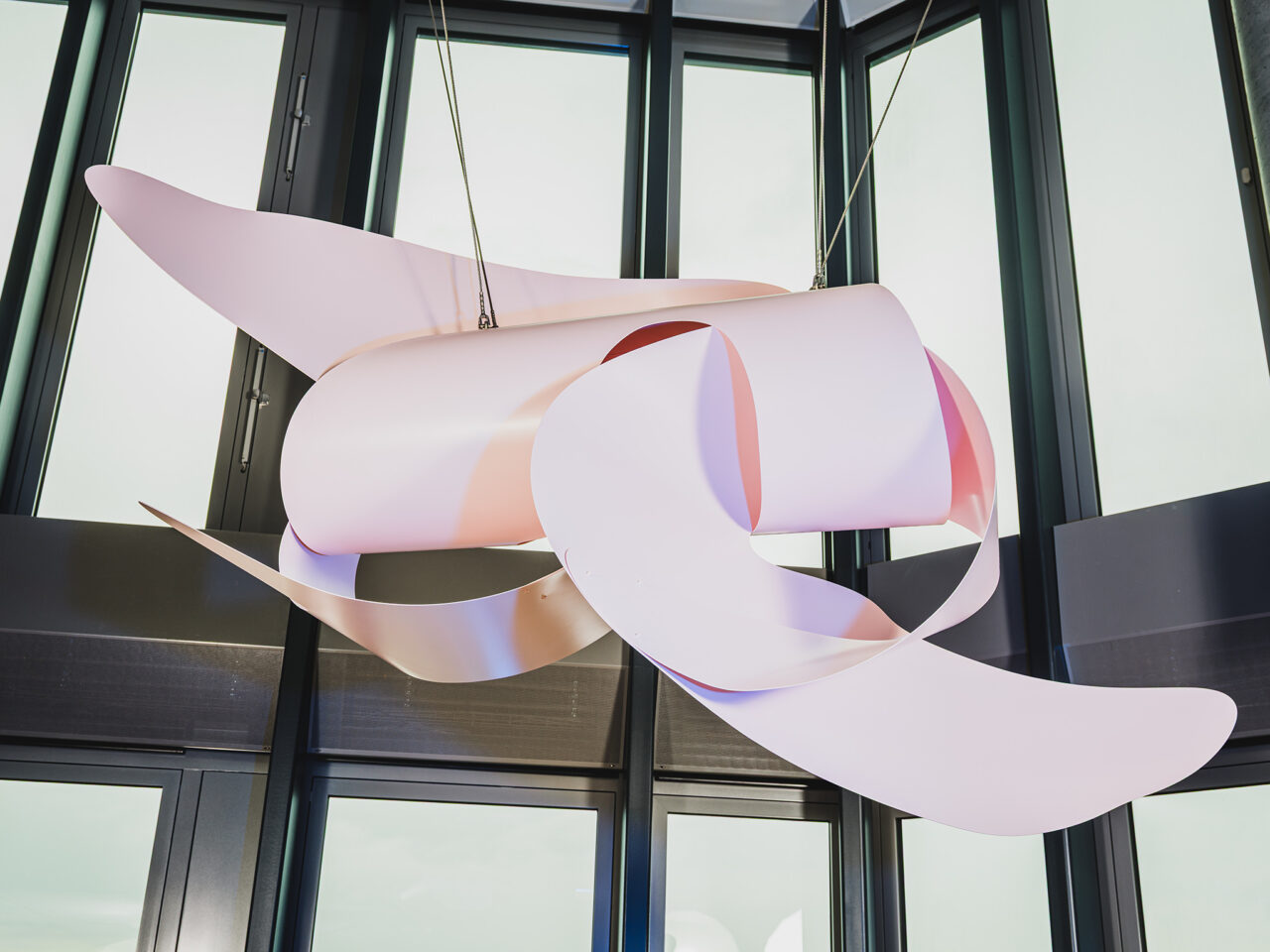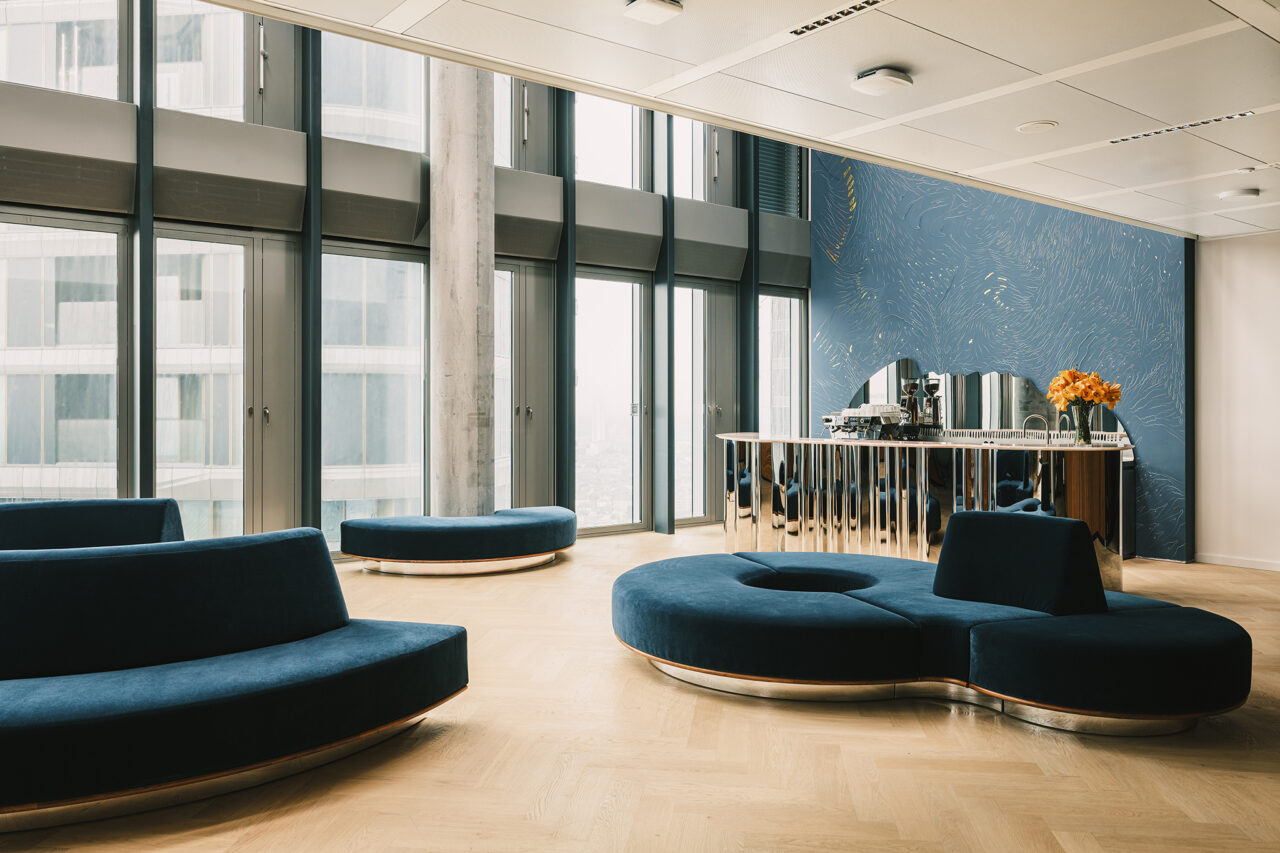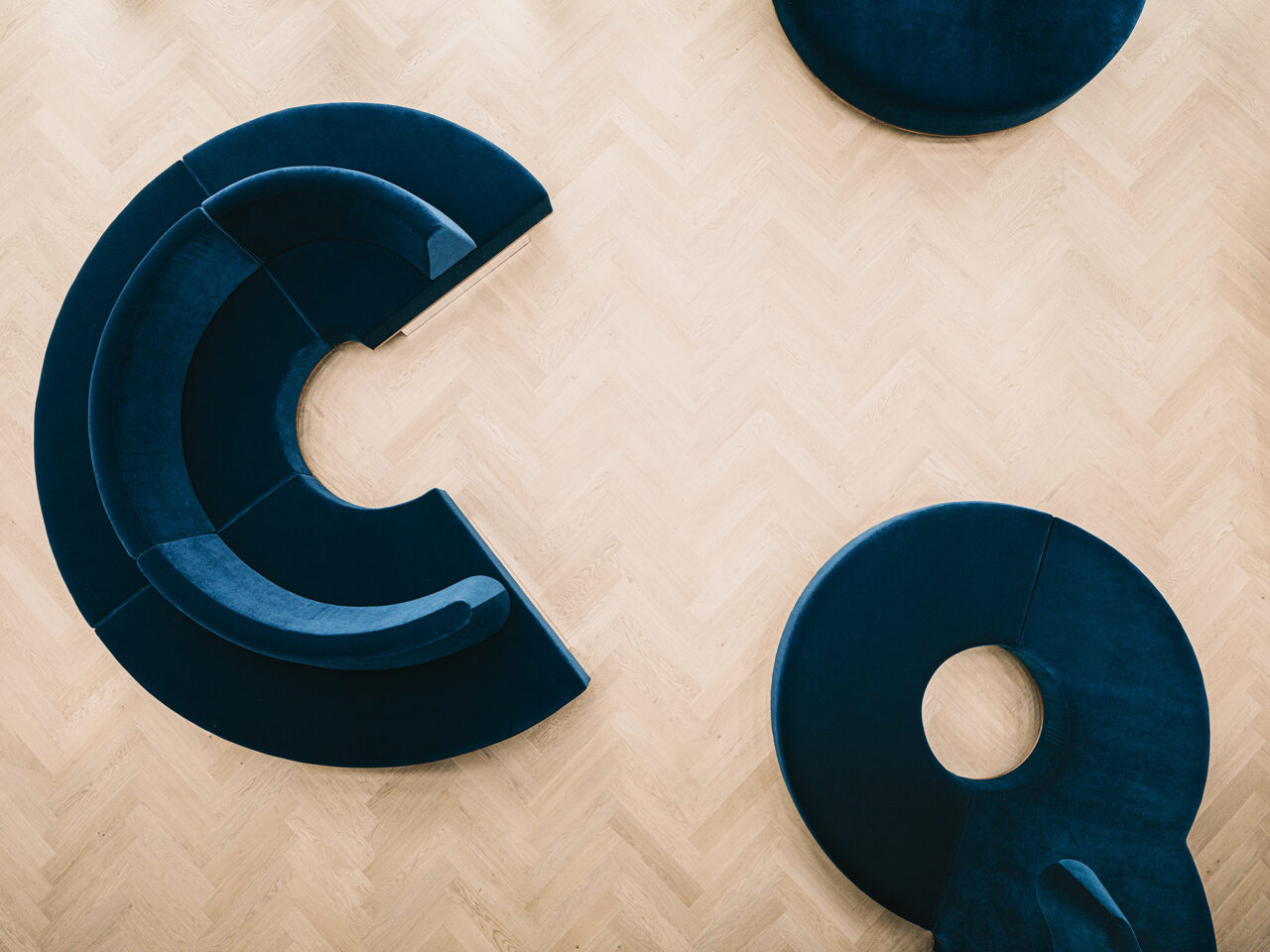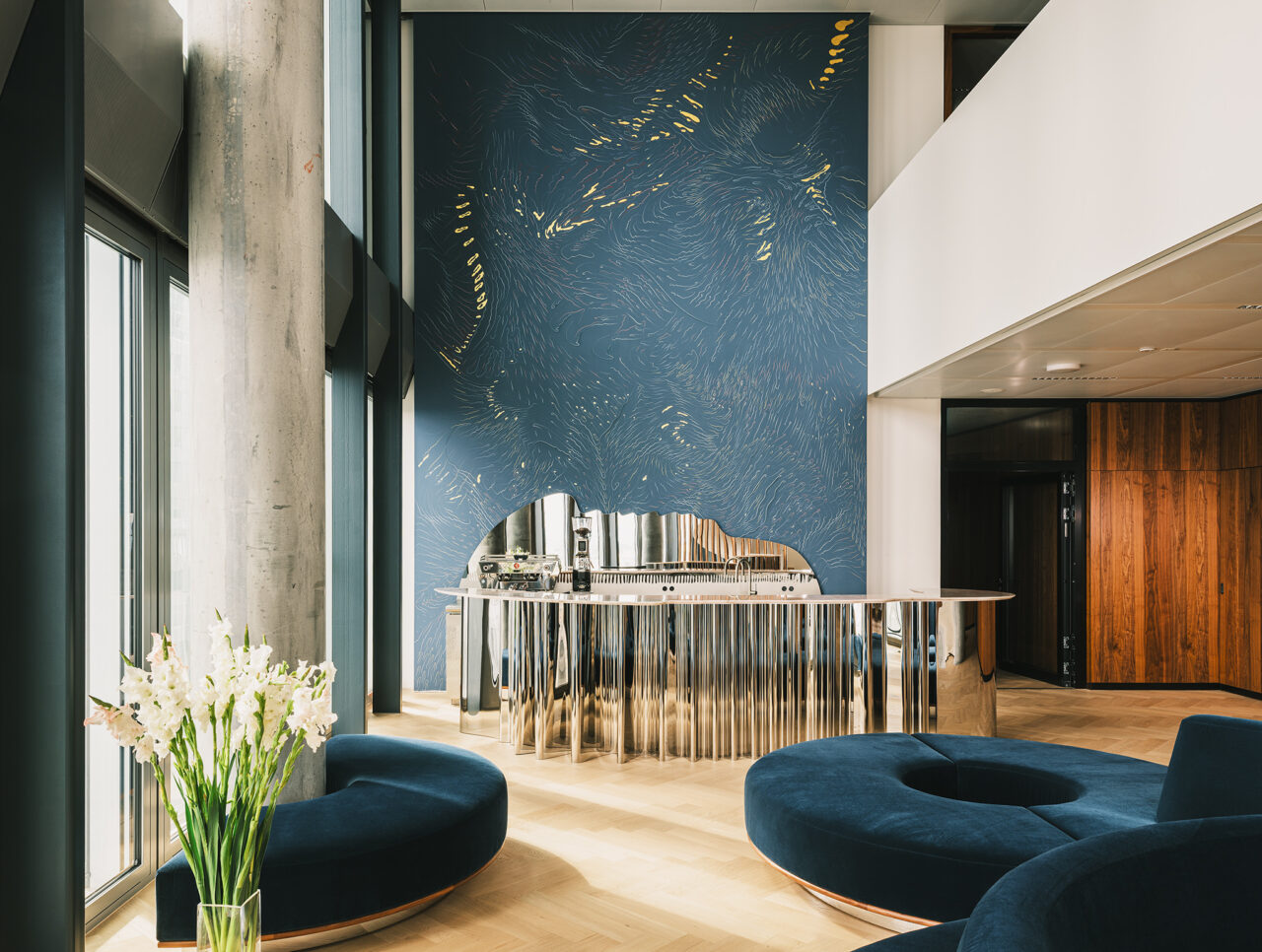
WV 2025 – 70 bis 77
Folded Time
An installation by Jorinde Voigt
for the Grand Entrée of Freshfields Frankfurt
Everything here moves between heaven and earth: body and material, colour and movement, thought and form. The world in its manifold states of matter. An affirmation of the omnipresence of the living. Presence as a universal principle of time and space.
Among these elements, Jorinde Voigt has created a room-enveloping commissioned installation for the Grand Entrée of Freshfields Frankfurt. Baroque and minimalist, concave and convex. As delicate as a pebble skimming the water’s surface, with meandering loops that continue without end, spreading into small waves, like curves in the soul. And with the force of a fearless conceptual artist able to turn a high-rise entrance hall into a landscape of intellectual and sculptural grandeur. The work embodies Leibniz’s idea of an analogy between the foldings of matter and those of sensation. A foyer as an unending play of foldings and unfoldings, curves, arcs, and undulations, reflections of time, and of inner life.
Close to the Frankfurt sky, a total work of art has come into being, uniting sculpture, painting, drawing, sculptural furniture, and architecture. It accords with Voigt’s multimedia oeuvre, and, for the first time in Frankfurt, flows into a single space. The unity of the arts is itself a Baroque concept. Form is function, and function is form—unyieldingly equal. No medium is given precedence; all merge into a totality, part of a universe in which nature and humanity condition one another and are linked through communication. Every curve and fold of the works animating this space is a vibration, a sound. Indeed, Voigt’s art springs from a musical understanding of the world and unfolds as a composition conceived in the manner of a score.
In her early drawings, the Notations, she developed pictorial spaces and her own visual codes, unfolding the world through a graphic-philosophical process that revealed its underlying conditions: distance, velocity, orientation, frequency, sound, rotation, temperature, and more—and reveals their simultaneity. At her core, Jorinde Voigt is a performative drawing artist. The line is her most natural form—an urge. “There is hardly a more authentic or immediate form than the hand-drawn line.” (Jorinde Voigt) Her artistic sensibility is Leonardesque: without the Renaissance master’s detailed anatomical studies of the body, his painting would have been unthinkable. What counts here, in the Frankfurt work, as a fold is essentially a compressed line seen from above that leads into infinity. Every point along the line contains information; through the act of folding, new neighbourhoods of information arise. Curves store time. Folds are wealth, an archive of stored time and a fixing of the present. The Baroque defines the fold as a fold into infinity. It lies between body and space. It conceals the body and at the same time reveals its nakedness, the hidden, to bring the inner to the fore. As in Bernini’s Ecstasy of Saint Teresa.
“I am that which I behold.”
The “Jorinde Voigt principle”, the genesis of her artistic process, is the localisation of being through perception. This principle lies between the classical Neoplatonic concepts of the Renaissance that defined the free artist. Where the invisible idea once preceded the visible disegno, Voigt inverts the order: from artistic and physical experimentation arises disegno, leading towards idea, the concept. Voigt penetrates phenomena to make them intelligible to herself and to gain knowledge. Her engagement with material is always bound to the body and its movement. A gesture reaches only as far as the arm as her movement on the scaffold when painting the large wall work Continuum for this entrance allows. Over two years, the artist worked with a personal trainer to approach her aspiration of drawing an infinite line, without ever interrupting the movement.
The commission is preceded by close observation of the surrounding nature: the tones of the sky, the motion of clouds, the river, the region’s stones, the materials and their colour nuances. Often the vantage point is that of a person on the 29th or 30th floor of Tower 1 in the FOUR complex. Viewpoints of a city. From this wealth of aspects she draws a spectrum of colour that sets the tones of the works. They range from the soft pink of dawn to the silver of foam, from the green-blue depths of the water’s depth to the Apollonian gold of light.
Eternità
(Italian; in German: “Ewigkeit”) denotes a state or condition without end.
From her observations of wave movements, the artist derives abstracted forms for sculpture and wall painting, and also for the sculptural furniture. The sculpture was preceded by countless paper studies of soft, V-shaped wave folds, interlaced until they reached the final form of Eternità. Through this sustained work on paper, bodily movement and time are inscribed in the sculpture from the outset. The process follows the principle of infinite variation, familiar from twelve-tone music. Eternità, a monumental yet weightless form in fine metal, hovers above the reception desk. It is one of many possible variants. At the same time, it is anchored in the space of everyday life: social, environmental. It hovers like a dancer before the city as stage set, tangible and immediate, drawing the viewer into the performance.
Continuum
Facing the sculpture at the other end is Continuum, a monumental, wall-spanning work created in situ. Water folds appear as oscillations in oil pastel, with depths in pure pigment and highlights in pure gold, fusing drawing and painting and merging architecture and art into a field of folds that binds the space.
“It’s a rhythmic, performative notation upon the wall, without prior sketch. Through writing into and over one another, interferences arise. The gestures of drawing gain their dynamic from observing water and sky, and from the evolution of notation itself. In the performative notation, all origins, themes, and conditions merge into an autonomous hybrid, highly complex and, in essence, infinitely extendable.”
(Jorinde Voigt)
For the space between sculpture and wall painting, Voigt designs functional furniture—bar, counter, sofa—as usable, pleasurable sculptures. Extending her recent series of sculptures, the Dyads, two forms meet again here, now in different materials: a curved, wafer-thin slab of rose quartzite paired with the pink of Eternità, supported by the silvery mirrored folds of polished stainless steel beneath. Altars, infinitely seductive, sensual. The mirrors absorb everything in the room and return even more to it, a prism.
From above, the stone slabs recall hybrids of riverbeds, weather patterns, currents, and winds, stones of a ford smoothed by water over centuries: the very dynamics Voigt had studied beforehand. The folds spring from a curved line; drawn upward into the vertical, they become three-dimensional space.
Fibonacci – Sofa
Everything in the entrance is gathered by the elegance of the dark-blue velvet sofa, a modular architecture in itself and the embodiment of a generous gesture of hospitality. It can open out playfully to populate the hall as a whole or in parts. Tactilely irresistible, doughnut-shaped semicircles that, geometrically derived from the Fibonacci sequence, can continue without end and reform. All lines lead into the firmament, humanity in the flow of perception, artistic grandeur in motion.
Text by Juliane von Herz
Fotos by Wolfgang Stahr
